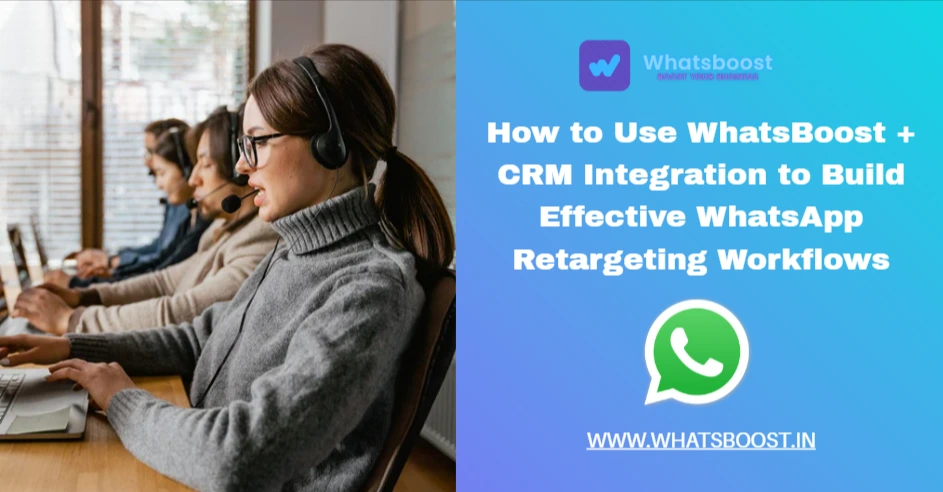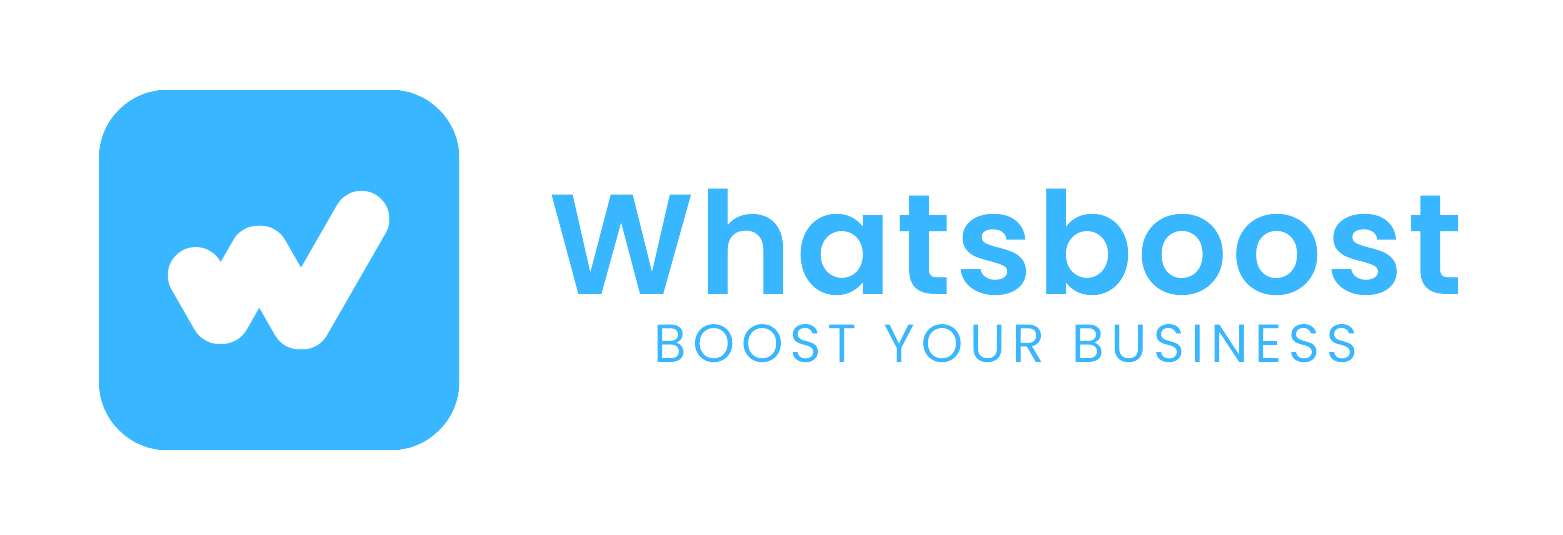
How to Use WhatsBoost + CRM Integration to Build Effective WhatsApp Retargeting Workflows
Lost leads piling up? Discover how to use WhatsBoost + CRM integration to create automated WhatsApp retargeting workflows that bring conversations back to life and convert silent prospects into customers.
When Interest Fades but Opportunity Remains
Imagine this: you receive a message from someone curious about your service. You reply, you share information, maybe you send a link. And then… silence. A week later, they’re nowhere to be found.
It happens often — especially in service businesses where decisions take time and follow-up matters. But what if this “lost” contact could be gently brought back into conversation? That’s where WhatsApp, paired with your CRM and a smart workflow via WhatsBoost, becomes your silent engine for re-engaging, following up, and turning potential into action.
The Hidden Value of Retargeting for Service-Business Owners
Retail and e-commerce often do retargeting around carts, products and clicks. Service-businesses (coaches, tuition-classes, consultants, agents) have different challenges:
-
Leads might research, wait, compare—so conversion isn’t immediate.
-
Communication is chat-based, trust-based, relationship-based.
-
A missed message or lack of follow-up can mean the lead quietly vanishes.
Retargeting here means returning to the conversation—just at the right time, with the right message. And when your CRM knows who the contact is and what they did (or didn’t do), you can trigger tailored WhatsApp messages that reconnect naturally.
How WhatsBoost + CRM Work Together as Your Retargeting Engine
When you integrate your CRM with WhatsBoost, you essentially automate the “return queue” of contacts who need a nudge. Here’s how the cycle works:
-
Data capture in CRM: A lead enters your pipeline—perhaps from a website form, chat, or WhatsApp widget.
-
Tag/status update: CRM marks “Lead – visited pricing page”, or “Engaged – call done, no purchase”.
-
Trigger in WhatsBoost: Based on the tag/status change, an automation sends a WhatsApp message.
-
Follow-up logic: If no reply, another message after a delay; if reply, route to sales rep or send next step.
-
Update CRM again: Based on response, tag moves to “Warm” or “Inactive”, and the workflow ends or loops.
Minimal tech, but real impact. The secret is mapping clear tags, writing conversational messages for each tag, and choosing timing that feels helpful rather than pushy.
Three Retargeting Workflow Scenarios You Can Use Immediately
Here are three ready-to-run templates you can adapt for your business:
Scenario A – “Discovery Call Done, No Purchase”
-
Trigger: CRM updates to “Call completed, no conversion”.
-
WhatsApp Message 1 (24h later): “Hi [Name], thanks again for our chat yesterday. I was thinking about the challenge you shared with [X]—if you’d like, I can send a quick note on 2 next-step options.”
-
Message 2 (72h later, if no reply): “No rush- just checking if you’d like to talk about getting started. If now isn’t the time, just reply ‘Later’ and we’ll touch base another time.”
-
CRM Action: If reply or book → tag “Warm”. If no reply after message 2 → tag “Cold lead”.
Scenario B – “Past Customer Inactive Over 30 Days”
-
Trigger: CRM tag “Customer” + inactivity 30 days.
-
WhatsApp Message 1: “Hi [Name], hope things are going well. We’ve had great feedback from our new [service upgrade]—would it interest you if I sent details?”
-
Message 2 (10 days later, if no reply): “Just a quick note: If you’d rather not receive updates, reply ‘Opt-Out’. Otherwise I’ll share occasional helpful info.”
-
CRM Action: If reply → tag “Re-Engaged Customer”. If no reply → tag “Dormant Customer”.
Scenario C – “Lead Visited Service Page, No Chat Started”
-
Trigger: CRM logs page visit “ServicePage” but no chat in 48 hours.
-
WhatsApp Message 1: “Hi [Name], I noticed you checked out our [Service Name]. If you’d like, I can answer one quick question about how it works for someone like you.”
-
Message 2 (5 days later): “If you’re still exploring, here’s a short guide on what most clients ask before starting. If you prefer I don’t send these, just reply ‘Stop’.”
-
CRM Action: On reply → tag “Engaged Lead”. On no reply → tag “Cold Lead”.
Setting Up Your Workflow: Tools, Tags & Timing
Here’s a practical checklist to implement this in your business:
-
Define key tags/statuses in CRM: For example: “Lead – visited”, “Lead – call done”, “Warm Lead”, “Customer >30 days inactive”, etc.
-
Connect your CRM to WhatsBoost: Ensure WhatsBoost picks up tag/status changes or triggers (via integration or no-code webhook).
-
Write message scripts: Draft two-step sequences for each workflow. Use their name, reference what they did, offer a question or value.
-
Set timing: Use a short delay (e.g., 24h, 48h, 5 days) before sending the first message; shorter for hot leads, longer for passive segments.
-
Build automation: In WhatsBoost create a workflow: trigger → send message → wait → condition (reply or no-reply) → next step.
-
Monitor and adjust: Look at reply rate, booking rate, conversion to purchase. If sequences perform poorly, tweak message tone or timing.
Remember: the workflow is meant to feel like a helpful nudge, not a constant push.
Measuring & Optimising Your Retargeting Success
Without measurement, you won’t know what works. Here are the key metrics small business owners should track:
-
Reply rate: Of those who receive message 1, how many reply?
-
Booking rate: Of those who reply, how many go on to book or engage further?
-
Conversion rate: Of those booked or engaged, how many convert to customer or re-customer?
-
Re-engagement time: How long from trigger to reply/booking – lower is better.
-
Segment drop-off analysis: Which tag/status loses the most contacts? Use CRM + WhatsBoost logs to find bottlenecks.
Optimisation ideas: If reply rate is low, try adjusting message tone or shortening delay. If conversion is low, change call-to-action or include a mini-value offer (tip, checklist) in message 1.
Best Practices & Pitfalls to Avoid
When building WhatsApp retargeting flows, small businesses often trip up on a few things:
-
Over-messaging too soon: The contact may feel pressured. Delay some time and keep messages friendly.
-
Generic messages: If the message could apply to anyone, you lose personal touch. Include name, reference the action they took.
-
Ignoring opt-out signals: If someone indicates they don’t want more messages, pause the workflow. Respect builds trust.
-
Not using CRM statuses correctly: Mis-tagging leads leads to irrelevant messages and confusion.
-
Skipping monitoring: Without tracking, you’ll keep sending flows that don’t convert and miss chance to refine.
Closing: Your First 30-Day Retargeting Sprint
Here’s a simple sprint to get you started:
-
Pick one segment (e.g., “Lead – visited service page, no chat”).
-
Define 1-2 message sequences with clear timing and next step (reply, booking link, etc.).
-
Set up tag triggers in your CRM and connect to a WhatsBoost workflow.
-
Launch the flow and monitor for 30 days. Track reply and booking rates.
-
After 30 days, review data: tweak messages, adjust timing, and roll out to the next segment (e.g., “Customer inactive >30 days”).
A focused sprint gets you live fast, gives you real data, and helps you build momentum. Over time, you’ll have a small but effective retargeting machine — where no lead simply vanishes.
Final Thought
For small service businesses, each lost chat is a potential client slipping through the cracks. Retargeting via WhatsApp—using your CRM data + WhatsBoost—lets you bring conversations back, stay top-of-mind, and guide contacts toward action. It doesn’t take heavy tech or huge budgets—just clear logic, smart timing, and messages that feel genuine. Start small, measure deeply, adjust boldly—and you’ll build a retargeting workflow that fits your brand and your audience.
Ready to build your first workflow? Let’s do it together — one segment, one sequence, and one nudge at a time.
